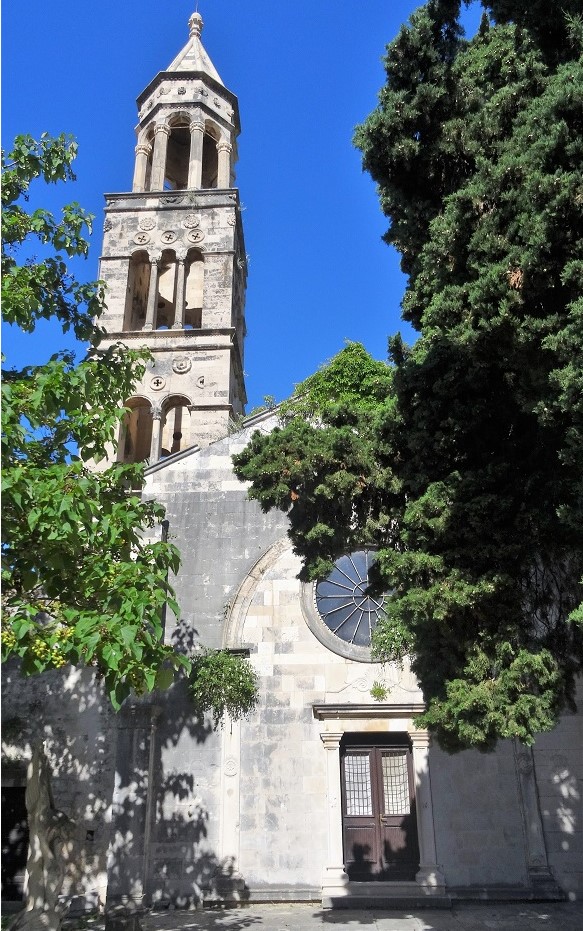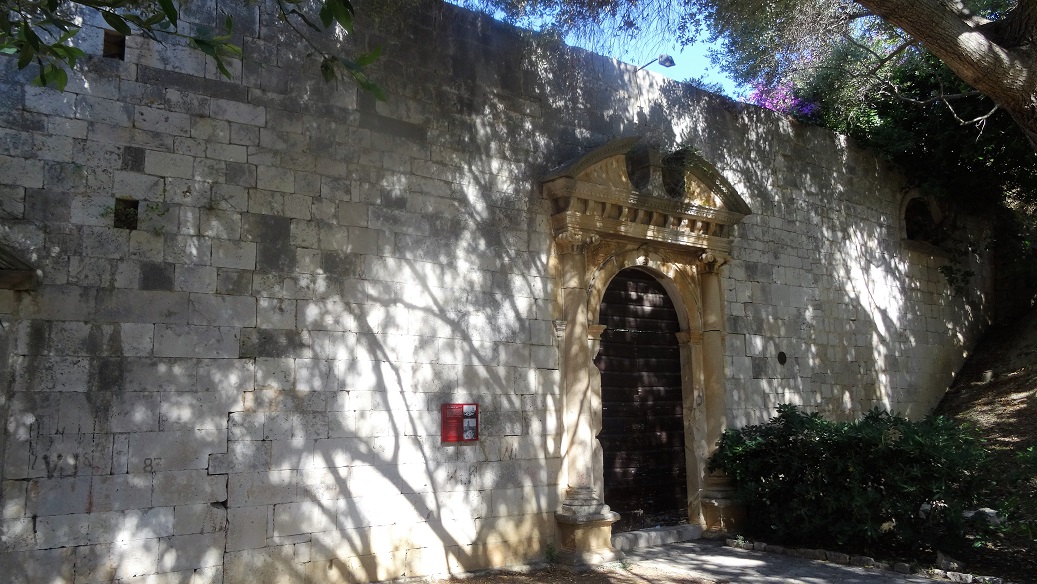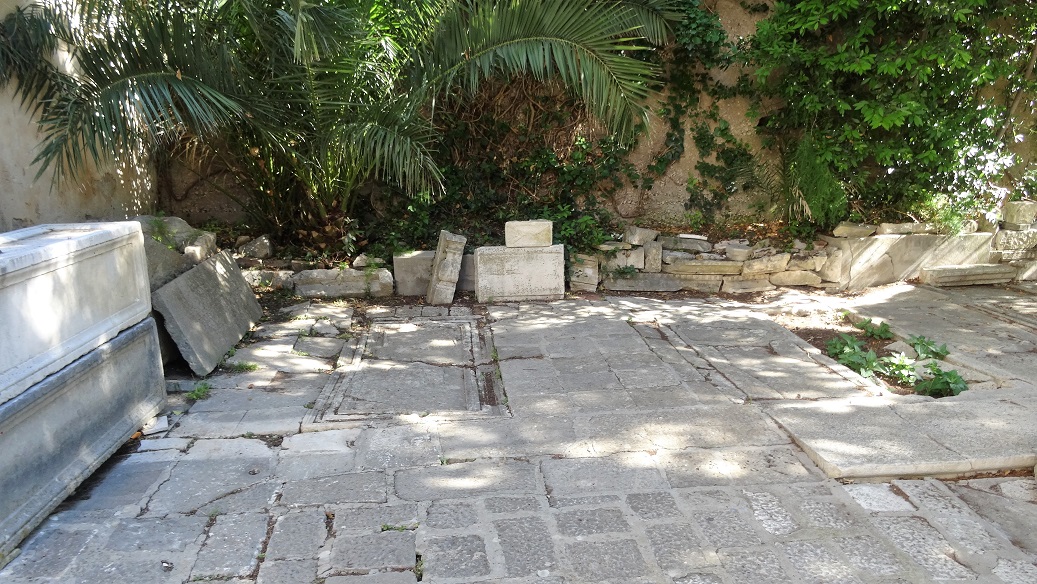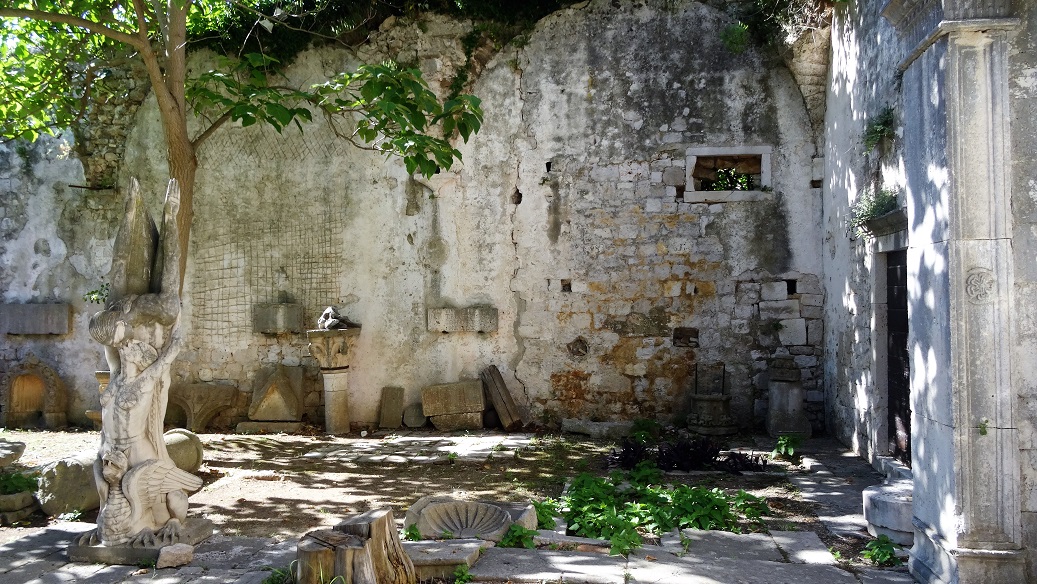


|
|
||||||||||||||||
|
|
||||||||||||||||
|
|
|||||||
|
|
Hvar Dominican Monastery and Church of Saint Mark 
The Dominican Monastery and Church of Saint Mark is located near the waterfront and close to St Steven’s Square in the heart of Hvar. From the 13th to the 18th centuries Hvar was part of the Venetian Empire. It was an important naval base and had a strong fortress, encircling town walls, and a protected port. The walls still survive, as do many of the fine houses and public buildings from the Venetian period.
The Dominican Order was formed in France in 1216 to preach the Gospel and oppose heresy, and throughout the Middle Ages it spread out across Europe, reaching Croatia towards the end of the 13th beginning of the 14th century. It is known that the construction of a Dominican monastery started in Dubrovnik in 1301. Records relating to the monastery and the Church of St Mark in Hvar date back to 1312, but the remains of the building as they are today are from the 16th and 17th century.
During its use, the church was the meeting place for a municipal assembly of the nobility who, as in so many countries at that time, dominated the country in all respects, something that led to the resentment of the common people. The 16th century was a period of unsettled times with conflict occurring between the citizens of the town and its nobles.
A plaque outside the building states that the Dominican monk Vinko Pribojević gave his speech "On the Origin and Glory of the Slavs" in Saint Mark’s in 1525, although some sources have suggested that this speech was made in Venice.
Apart from civil unrest, Hvar was also subject to repeated attacks from the Turks who had occupied the mainland across from the island of Hvar and in 1571 it was sacked by the Turkish fleet just prior to their defeat at the Battle of Lapanto. In 1579, following an explosion of the gunpowder magazine in the fortress, Hvar underwent major reconstruction and development.
Hvar was taken by the French in 1806 during the Napoleonic Wars, and in 1807 the French closed the monastery. Their occupation was short lived, however, as the island was taken by the British in 1812.
A number of graves, dating from the 15th to the 18th century, were originally located within the walls of St Mark’s church in what was a three-nave building. The graves are now found in the open space between the entrance gate and the façade of the church. In addition to headstones there are a number of statues, all of which are in poor condition.
In the first half of the 19th century the façade that now fronts the building was moved there from its original location where the entrance gate now stands. Also at that time the apse of the church was converted into a chapel.
The whole complex is in poor condition with part of the chapel being overgrown with vegetation. Its bell-tower is intact but without its bells. Currently it is not open to visitors due to the fact that it is not considered safe, although the possibility of work being carried out on it has been discussed. It is hoped that this would commence sometime in the 2020’s, although it is likely to be a number of years before it would be open to visitors.  
 
|
|
|||||
|
|
|||||||
All Photographs were taken by and are copyright of Ron Gatepain
| Site Map |